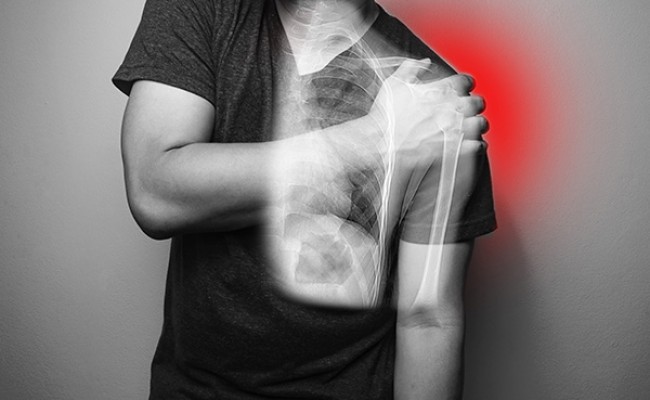
Acromioclavicular osteoarthritis
- 20/12/2022
What is acromioclavicular osteoarthritis?
Acromioclavicular osteoarthritis is a degenerative process that occurs in the acromioclavicular joint (between the acromion, part of the scapula, and the clavicle).
What are the causes of acromioclavicular osteoarthritis?
The most common causes of acromioclavicular osteoarthritis include:
Joint wear and tear and aging: This is the most common cause. With age, the cartilage that covers the joint surfaces naturally wears down. Although degenerative changes are common after age 40, not everyone develops symptoms.
Previous trauma and injuries:
- Repeated bruises: Direct blows or repetitive microtrauma to the shoulder, common in contact sports (such as rugby, hockey), weightlifting, or activities that place extreme forces on the shoulder.
- Acromioclavicular dislocations: A previous dislocation or subluxation of the acromioclavicular joint can disrupt the joint and accelerate the long-term degenerative process, even years after the initial trauma.
- Fractures: Fractures affecting the clavicle or acromion near the joint can alter alignment and function, leading to osteoarthritis.
Overuse and repetitive shoulder: Work or sports activities that involve repetitive overhead arm movements and lifting heavy objects can increase stress on the joint and accelerate cartilage wear.
Biomechanical or anatomical alterations: The morphology of the joint itself, with a small contact surface and a certain obliquity or incongruity, can increase loads and predispose to degeneration.
Obesity and overweight: These can increase the overall load on joints, including those of the shoulder, accelerating the degenerative process.
Improper posture: Maintaining improper postures, especially those that involve holding the arms above the head for prolonged periods.
Inflammatory diseases: Although less common, some systemic inflammatory diseases (such as rheumatoid arthritis) can affect the joint and contribute to its degeneration.
How is acromioclavicular osteoarthritis diagnosed?
The diagnosis of acromioclavicular osteoarthritis is made through a combination of a clinical evaluation, a complete medical history, and various imaging tests. We may use X-rays, ultrasound, and MRI to confirm the diagnosis.
How is acromioclavicular osteoarthritis treated?
Treatment for acromioclavicular (AC) osteoarthritis depends on the severity of symptoms and how they are affecting the patient's quality of life. Some treatments include:
- Lifestyle modifications: avoiding activities that cause pain and resting the AC joint.
- Physical therapy: Muscle strengthening and stretching to relieve pressure on the AC joint.
- Pain relievers and nonsteroidal anti-inflammatory drugs (NSAIDs): To reduce pain and inflammation.
- Ultrasound-guided corticosteroid injections: To reduce inflammation and pain, improving shoulder function. Ultrasound guidance is especially useful as the joint is small and difficult to access.(See VIDEO on ultrasound-guided injection of the acromioclavicular joint)
- Ice therapy: Applying ice to the affected area to reduce inflammation and pain.
- Surgery: In severe cases, a surgical procedure may be necessary to repair or reconstruct the AC joint.
It is important to note that treatment for AC osteoarthritis should be individualized and based on the evaluation of a healthcare professional.
Make an appointment with Dr. Jordi Jiménez. He will see you in the center of Palma and help you regain your quality of life.

![[VIDEO] Ultrasound-Guided Injection for Trigger Finger](https://drjordijimenez.com/imagen/100/100/Imagenes/infiltracion-ecoguidada-dedo-resorte-drjordijimenez.jpg)
![[VIDEO] Ultrasound-guided infiltration of the lumbar facets](https://drjordijimenez.com/imagen/100/100/imagenes-pagina/sindrome-facetario-lumbar-drjordijimenez (1).jpg)
![[VIDEO] Ultrasound-guided infiltration of the hip joint](https://drjordijimenez.com/imagen/100/100/Imagenes/valgo-dinamico-rodilla-drjordijimenez.jpg)